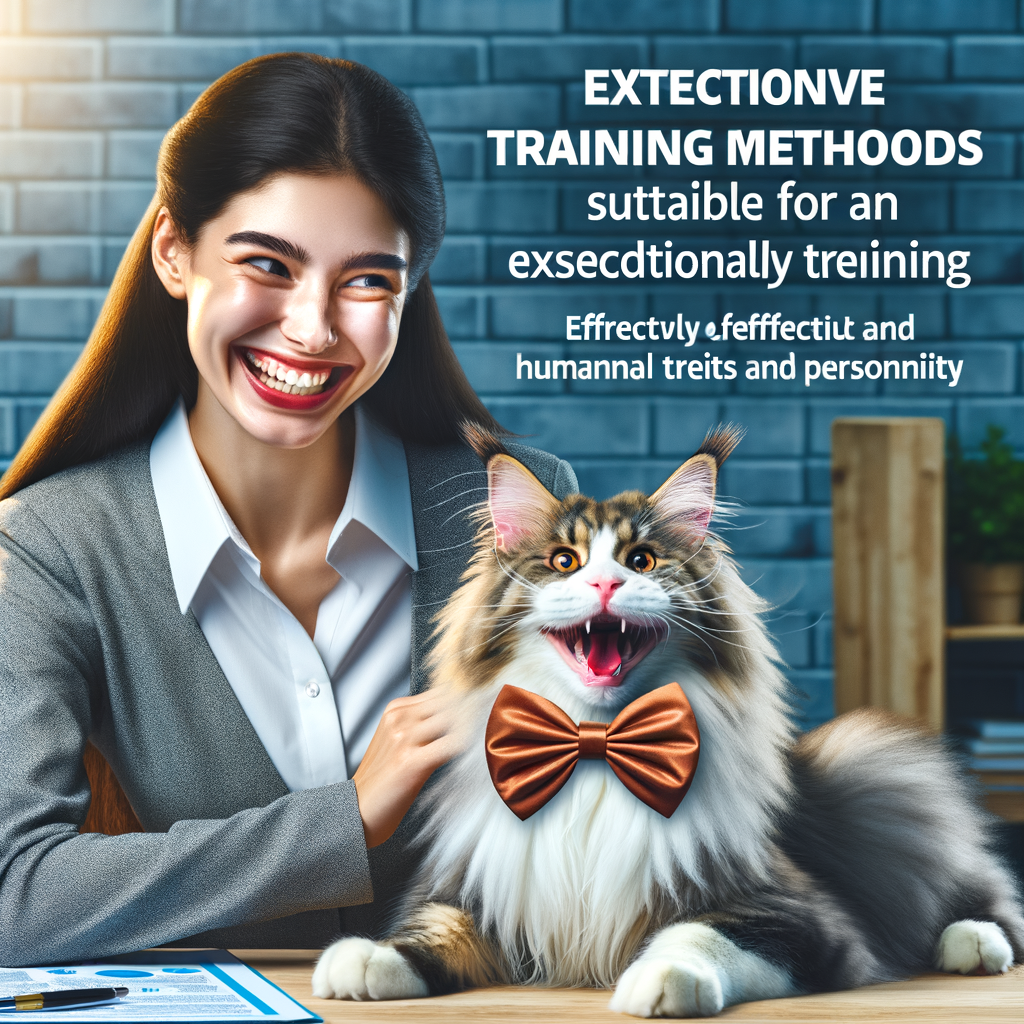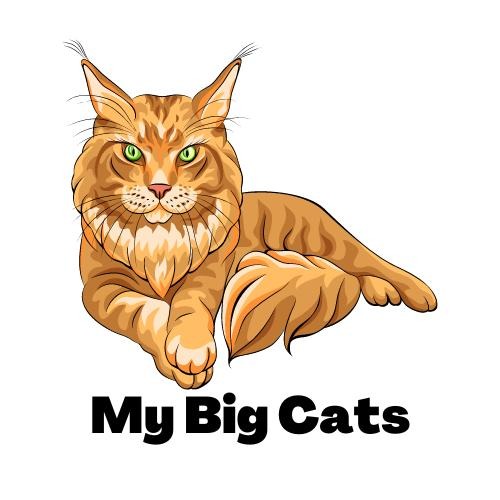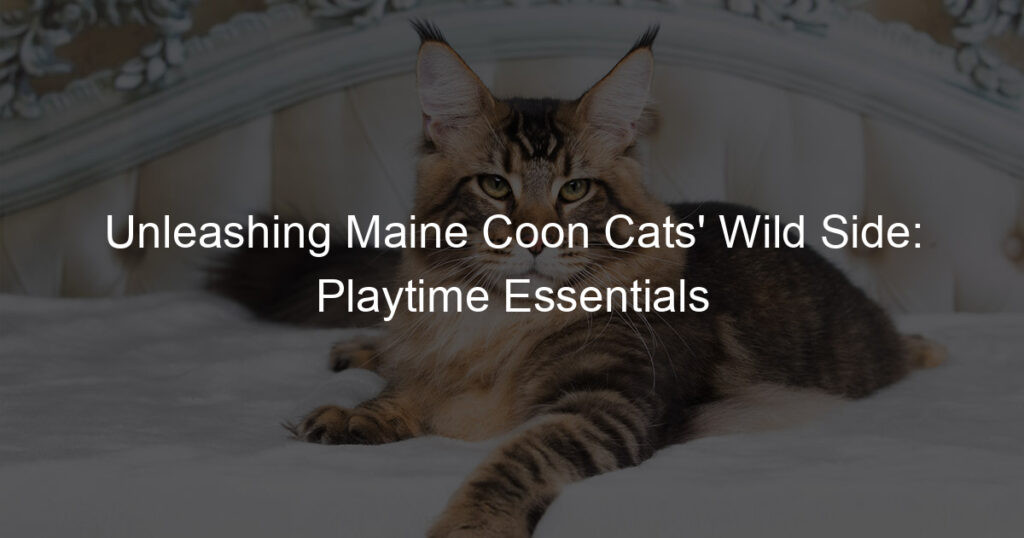
Introduction to Maine Coon Cats
Let’s embark on a fascinating journey to learn about Maine Coon Cats, one of the most popular and beloved cat breeds in the world. Known for their large size, tufted ears, and bushy tails, these cats are truly a sight to behold. In this section, we will delve into their origins, unique personality traits, and care requirements.
-
Origins and History
The Maine Coon Cat, as the name suggests, hails from the state of Maine in the United States. They are considered one of the oldest natural breeds in North America. While their exact origins remain a mystery, one popular theory suggests that they are the descendants of longhaired cats belonging to Marie Antoinette, the last queen of France.
These cats were highly valued for their hunting skills, especially in controlling rodent populations. Over time, their striking appearance and friendly nature made them popular as pets. In fact, a Maine Coon Cat named Cosey won the first major cat show in the United States in 1895.
-
Maine Coon Cat Personality
Maine Coon Cats are often described as “gentle giants” due to their large size and friendly disposition. They are known for their intelligence, playfulness, and sociability. Despite their hunting history, they are typically very gentle and get along well with children and other pets.
These cats are also known for their “talking” abilities. They have a wide range of vocalizations and are not shy about using them to communicate with their human companions. However, they are not overly demanding and are quite content to just be in the same room with their owners, often following them around the house.
-
Maine Coon Cat Care
Despite their rugged appearance, Maine Coon Cats require regular grooming due to their long, thick fur. A weekly combing is usually sufficient to keep their coat looking its best and prevent matting. They also benefit from regular dental check-ups and nail trims.
These cats are generally healthy, but they are prone to certain genetic health issues, such as hip dysplasia and heart disease. Regular vet check-ups and a balanced diet can help ensure they live a long, healthy life. They are also quite active and enjoy interactive toys and playtime to keep them mentally and physically stimulated.
Now that we’ve covered the basics, let’s dive deeper into understanding the behavior of Maine Coon Cats and the joy of training them in the following sections.
Understanding Maine Coon Cat Behavior
When it comes to understanding Maine Coon cat behavior, there are three main areas to focus on. These include their common traits, how they interact with humans, and how they interact with other cats. Let’s delve into each of these areas.
- Common Traits
- Interaction with Humans
- Interaction with Other Cats
Maine Coon cats are known for their friendly and sociable nature. They are often referred to as “gentle giants” due to their large size and gentle demeanor. These cats are also highly intelligent, curious, and playful. They love to explore their surroundings and are often found climbing trees or perching on high places. Maine Coons are also known for their distinctive “chirping” sound, which is different from the typical cat “meow”.
Maine Coon cats are very affectionate and love to spend time with their human companions. They enjoy being petted and will often follow their owners around the house. Despite their large size, they are known to be lap cats and will happily curl up on their owner’s lap. They are also good with children and can be very patient, making them a great choice for families.
When it comes to interacting with other cats, Maine Coons are generally friendly and sociable. They can get along well with other cats, especially if they are introduced properly. However, like all cats, they can be territorial and may need time to adjust to new feline companions. It’s important to introduce new cats slowly and give your Maine Coon time to get used to the new addition.
In conclusion, Maine Coon cats are friendly, sociable, and intelligent cats that make great companions. Whether they’re interacting with humans or other cats, their gentle and playful nature shines through. Understanding these behaviors can help you build a stronger bond with your Maine Coon.
The Joy of Training Cats
Training cats, particularly Maine Coon cats, is not only possible but also a delightful experience. It’s a common misconception that cats are untrainable. In reality, with the right approach, you can teach your feline friend various tricks and behaviors. Let’s explore why you should consider training your cat.
Why Train Your Cat?
There are several reasons why training your cat can be beneficial for both you and your furry friend. Here are the top three:
- Improves Bonding
- Enhances Mental Stimulation
- Prevents Behavioral Issues
Training your cat can significantly strengthen your bond. When you spend time teaching your cat new tricks or behaviors, you’re also spending quality time together. This interaction fosters a deeper understanding and mutual respect between you and your cat. It’s like learning a new language together, one where you understand each other better.
Cats, especially intelligent breeds like Maine Coon, need mental stimulation. Training provides this stimulation, keeping your cat’s mind sharp and active. It’s like giving your cat a puzzle to solve, which can prevent boredom and promote overall well-being.
Training can help prevent or correct behavioral issues. For instance, if your cat has a habit of scratching furniture, training them to use a scratching post instead can solve this problem. It’s a proactive approach to managing your cat’s behavior, leading to a happier and more peaceful coexistence.
In conclusion, training your cat can improve your bond, provide mental stimulation, and prevent behavioral issues. It’s a joyous and rewarding process that can enhance the quality of life for both you and your cat. In the next section, we’ll explore some interactive training methods for cats.
Interactive Training for Cats
Training your cat can be a fun and rewarding experience. It not only strengthens your bond with your feline friend but also keeps them mentally stimulated. There are several interactive training methods you can use. Here are three of the most effective ones:
- Using Toys
- Using Treats
- Using Clicker Training
Playing with toys is a natural instinct for cats. They love the thrill of the chase and the satisfaction of a successful ‘hunt’. You can use this to your advantage in training. For instance, you can use a feather wand to teach your cat to jump or a laser pointer to teach them to follow a target. Remember, always end the play session by allowing your cat to ‘catch’ the toy. This gives them a sense of achievement and satisfaction.
Treats are a great motivator for cats. They can be used to reward good behavior and encourage your cat to repeat it. For example, if you’re teaching your cat to sit, you can give them a treat each time they do it correctly. Just make sure you’re using healthy treats and not overfeeding your cat. Too many treats can lead to weight gain and health problems.
Clicker training is a method that uses a small device that makes a ‘click’ sound to signal to your cat that they’ve done something right. The click is followed by a reward, usually a treat. This method is highly effective because it allows you to mark the exact moment your cat performs the desired behavior, making it easier for them to understand what they’re being rewarded for. With patience and consistency, you can use clicker training to teach your cat a wide range of commands and tricks.
In conclusion, interactive training methods like using toys, treats, and clicker training can make the training process more enjoyable and effective for both you and your cat. Remember, the key to successful training is patience, consistency, and positive reinforcement. Happy training!
Training Maine Coon Cats: Techniques and Tips
Training your Maine Coon cat can be a rewarding experience for both you and your feline friend. Not only does it strengthen your bond, but it also stimulates your cat’s mind and keeps them engaged. Here, we will focus on teaching your Maine Coon some basic commands.
Basic Commands
Training a cat is different from training a dog, but it’s not impossible. With patience and consistency, you can teach your Maine Coon the following basic commands:
- Sit
- Stay
- Come
This command is useful when you want your cat to stay in one place. Start by holding a treat above your cat’s head. As they look up at the treat, their bottom will naturally go down. Once they sit, say “sit,” give them the treat, and praise them. Repeat this process until your cat associates the command with the action.
This command is a bit more challenging but equally important. Begin by asking your cat to sit. Then, with a treat in your hand, slowly move away from them. If they stay put, say “stay,” give them the treat, and praise them. Gradually increase the distance between you and your cat during training sessions.
This command is essential for your cat’s safety. Start by kneeling a few feet away from your cat. Call their name and say “come.” When they come to you, reward them with a treat and praise. Gradually increase the distance as they get better at this command.
Remember, training should be a fun and positive experience for your Maine Coon. Always end training sessions on a high note and never punish your cat for not understanding a command. With time and patience, your Maine Coon will master these basic commands and be ready for more advanced training.
Advanced Training
Once your Maine Coon cat has mastered the basic commands, it’s time to move on to more advanced training. This includes leash training, trick training, and agility training. These techniques not only provide mental stimulation for your cat but also strengthen your bond with them.
- Leash Training
- Trick Training
- Agility Training
Leash training is an excellent way to ensure your Maine Coon cat’s safety during outdoor adventures. Start by introducing the leash and harness indoors, allowing your cat to get comfortable with them. Gradually increase the time your cat spends on the leash, rewarding them with treats and praise for positive behavior. Remember, patience is key in leash training.
Trick training is not just for dogs! Maine Coon cats are intelligent and can learn a variety of tricks, such as high-five, roll over, and even fetch. Start with simple tricks and gradually move on to more complex ones. Use positive reinforcement like treats and praise to encourage your cat. Trick training is a fun way to engage your cat and showcase their intelligence.
Maine Coon cats are agile and active, making them perfect candidates for agility training. This includes navigating through tunnels, jumping over hurdles, and weaving through poles. Agility training is a great way to provide physical exercise and mental stimulation for your cat. It also strengthens the bond between you and your cat as you guide them through the course.
In conclusion, advanced training techniques can greatly enhance your Maine Coon cat’s skills and deepen your bond with them. Remember, every cat is unique, so it’s important to go at your cat’s pace and make training a positive and fun experience.
Bonding with Maine Coon Cats Through Training
Training your Maine Coon cat is not just about teaching them tricks or good manners. It’s also an excellent opportunity to build a strong bond with your feline friend. Here are three key ways to strengthen your bond with your Maine Coon through training.
- Building Trust
- Spending Quality Time
- Understanding Your Cat’s Needs
Trust is the foundation of any relationship, including the one with your Maine Coon. Training sessions give you a chance to build this trust. When you train your cat, you show them that you are a reliable source of guidance and support. For example, when you teach your cat to sit or stay, and reward them with a treat or praise, they learn to trust your instructions. Over time, this trust can deepen, leading to a stronger bond between you and your cat.
Training your Maine Coon also means spending quality time together. This is not just about the quantity of time, but the quality. During training sessions, you are fully engaged with your cat, focusing on their actions and reactions. This dedicated attention can make your cat feel loved and valued. Remember, cats are social animals and they thrive on interaction. So, the more quality time you spend with your Maine Coon, the stronger your bond will be.
Finally, training your Maine Coon can help you understand their needs better. Each cat is unique, with their own personality and preferences. Through training, you can learn what motivates your cat, what they enjoy, and what they dislike. This understanding can help you cater to your cat’s needs more effectively, which in turn can strengthen your bond. For instance, if you notice that your Maine Coon enjoys a particular type of treat or toy, you can use that to make their training sessions more enjoyable.
In conclusion, training your Maine Coon cat is not just about teaching them new skills. It’s also about building a strong, loving bond with your feline friend. So, take the time to train your cat, and enjoy the rewards of a deeper, more fulfilling relationship.
Training Domestic Cats: Comparing Maine Coons to Other Breeds
Training a domestic cat can be a rewarding experience, but it’s important to understand that not all breeds are the same. Let’s take a closer look at how Maine Coons compare to other breeds in terms of trainability, the specific challenges they present, and some success stories.
- Trainability of Different Breeds
- Specific Challenges with Maine Coons
- Success Stories
While all cats have their unique personalities, some breeds are more trainable than others. For example, Siamese cats are known for their intelligence and curiosity, making them relatively easy to train. On the other hand, Persian cats are more independent and may require more patience.
Maine Coons, with their friendly and playful nature, are often considered one of the most trainable breeds. They are quick learners and enjoy interactive play, which can be used as a part of their training.
Despite their trainability, Maine Coons can present some unique challenges. Their large size and high energy levels mean they require more space and stimulation than other breeds. Additionally, their thick fur requires regular grooming, which can be a training challenge in itself.
However, with consistent training and positive reinforcement, these challenges can be overcome. Remember, patience and understanding are key when training any breed of cat.
Many Maine Coon owners have shared their success stories about training their cats. One owner managed to train their Maine Coon to fetch, while another successfully taught their cat to use the toilet instead of a litter box. These stories show that with patience, consistency, and a lot of love, training a Maine Coon can be a rewarding experience for both the cat and the owner.
In conclusion, while there are differences in trainability among different cat breeds, Maine Coons are generally considered one of the most trainable. However, they do present some unique challenges that require patience and understanding. But with the right approach, training a Maine Coon can lead to many wonderful and memorable experiences.
Conclusion: The Delight of Shared Training
As we conclude, let’s revisit the joy and benefits that shared training brings to both Maine Coon cats and their owners. This practice is not just about teaching tricks or good behavior, but it’s also about building a stronger bond and understanding between the two.
- Benefits for the Cat
- Benefits for the Owner
- Creating a Stronger Bond
Training provides mental stimulation for Maine Coon cats, keeping their minds sharp and engaged. It also helps them understand their boundaries, making them feel more secure in their environment. According to a study by the American Veterinary Society of Animal Behavior, trained cats are less likely to develop behavioral problems.
For the owners, training their Maine Coon cats can be a rewarding experience. It not only helps in managing the cat’s behavior but also reduces potential damages in the household. Owners who train their cats often report a decrease in stress levels, as they feel more in control and better able to communicate with their pets.
Shared training sessions are a wonderful opportunity for owners and their Maine Coon cats to spend quality time together. This shared experience can strengthen the bond between them, leading to a more harmonious coexistence. As the famous author, Roger Caras once said, “Cats are not our whole life, but they make our lives whole.”
In conclusion, shared training is a delightful and beneficial practice that can enhance the lives of both Maine Coon cats and their owners. It’s an investment of time and effort that pays off in countless ways, making it a worthwhile endeavor for any cat owner.








